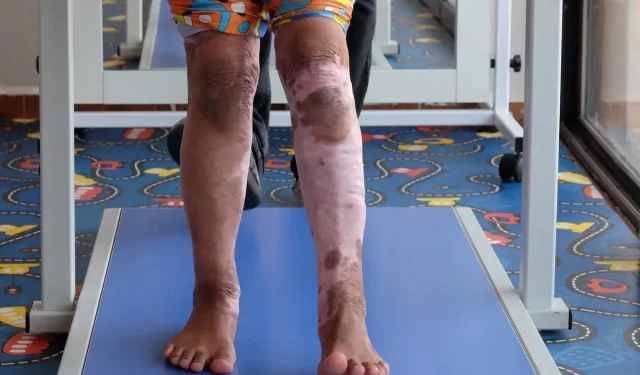Researchers 3D Print Edgeless Skin Grafts for Burn Victims

Researchers at Columbia University are 3D printing edgeless skin grafts directly onto the 3D structure of the area to be transplanted.
In recent years, skin grafting has made tremendous progress. Today, grafts are more commonly bioprinted as living inkjet printers, using the patient’s own cells to support the growth process until vascularization. The main disadvantage of these printed inserts is that they can only be made flat with open edges. This method “ignores the completely enclosed geometry of human skin,”say researchers at Columbia University, who have developed a new process for creating skin of any three-dimensional shape.
Columbia University researchers 3D print edgeless skin grafts
The team published their work in a paper titled “Designing Edgeless Human Skin with Improved Biomechanical Properties”published in January in the journal Scientific Advances. The scientists explain how they envisioned “skin as a fully enclosed three-dimensional tissue that can be shaped to fit the limb of the body and easily transplanted, like biological clothing.”
“These 3D skin constructs, which can be transplanted as ‘biological clothing’, could have many benefits,”Dr. Hassan Erbil Abachi, principal investigator and assistant professor of dermatology at Columbia University, said in a press release. “They will significantly reduce the need for sutures, reduce the duration of operations and improve the cosmetic result.”
Moreover, these homogeneous grafts have shown superior mechanical and functional performance compared to their patchwork alternatives. The Columbia University team called these grafts edgeless wearable skin constructs (WESC).
directly on the 3D structure of the area to be transplanted
The process of making these skin prostheses is not far from the existing methods of obtaining “flat skin”. The transplant site is first scanned with a 3D laser to create a virtual copy of the structure. The data is then passed through computer-aided design software to create a hollow application model, after which the assembly is printed. This serves as a support on which the patient’s cells can grow. It is lined with dermal fibroblasts and collagen, then a layer of keratinocytes (which makes up the epidermis) and a layer of “food”that promotes cell growth. As with “flat skin”, the entire process takes about three weeks before it is ready for grafting.
3D Skin Printing by Alberto Pappalardo and Hassan Erbil Abacha / Columbia University, Vagelos College of Physicians and Surgeons
The first laboratory trials in mice were very promising. “It was like putting shorts on mice,” says Dr. Abachi. “The whole operation took about 10 minutes.”But don’t be too impatient, mouse skin is nothing like human skin. She heals differently. Therefore, further studies in other animals will be required before human trials can begin. Such tests will certainly take several years.
Leave a Reply